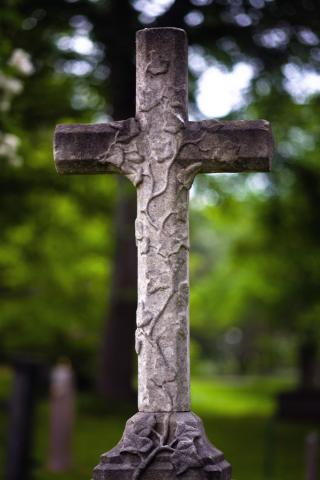Most Protestant churches today tend to be less ornate and our crosses bare—a direct reflection of the Reformation call to integrity.

October 31, 2017 marks the 500th anniversary of the Protestant Reformation, an important date in the history of the United Church and for Reformed Churches around the world. To commemorate the occasion, we are publishing a series of blog posts by Trisha Elliott on "What Makes Us Protestant." Take a look at all the blog posts in this series.
Crosses have been hanging around since the early days of Christianity. Early Christian catacombal art disguised crosses in symbols like anchors and sails. The crucifix (from Latin cruci fixus, meaning “fixed to a cross”) has been around nearly as long, the earliest making an appearance around the fifth century.
By the Middle Ages, crucifixes elaborately emphasized the suffering of Jesus, detailing his wounds and blood. The idea was that Christians were expected to crucify the wayward aspects of their human nature alongside Jesus.
Fast forward to the Reformation, and the veneration of images became a topic of heated debate. Why? Some of the opposition drew upon the biblical prohibition against worshipping graven images. Some was fuelled by the theological opinion that Christians should get rid of anything that functions as an intermediary between the worshipper and God. Others wanted to purge the church of symbols that reminded them of the power of Rome. At the time, the display of prosperity in opulently gilded, colourful, and carved images, for example, angered reformers because they felt the images flaunted the wealth of the donors and gave them social status. Sometimes, icons were believed to have mystical powers and generated a tourist industry when people flocked to them—an industry ripe for abuse. The reformers saw all of this as indicative of the excess they were trying to save the church from.
But they were all over the map on what to do about it. Some reformers sanctioned church raids, smashing sculptures, slicing paintings, even discarding candles and organs. Others adopted a more moderate approach, covering the sculptures with cloth and quietly taking paintings down.
Reformers were equally conflicted about the cross. They disagreed about whether to reject or use the crucifix, to adopt an unadorned cross, or to discard the symbol altogether. German reformer Martin Luther, for example, favoured the crucifix, whereas French reformer John Calvin vehemently opposed both the cross and the crucifix.
Most Protestant churches today tend to be less ornate and our crosses bare—a direct reflection of the Reformation call to integrity.
What do you think?
1. Do you prefer the empty cross or the crucifix? Why?
2. Do you think the prevalence of banners in United Churches indicates that we are warming to Christian art and images?
3. When are Christian symbols and images best used?
—Rev. Trisha Elliott, Southminster Pastoral Charge, Ottawa
For worship materials for Reformation Sunday—including a bulletin insert for the 500th anniversary of the Protestant Reformation on October 31, 2017—see the Worship section.